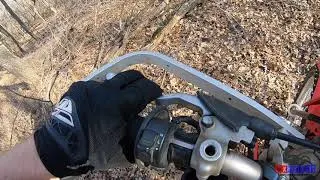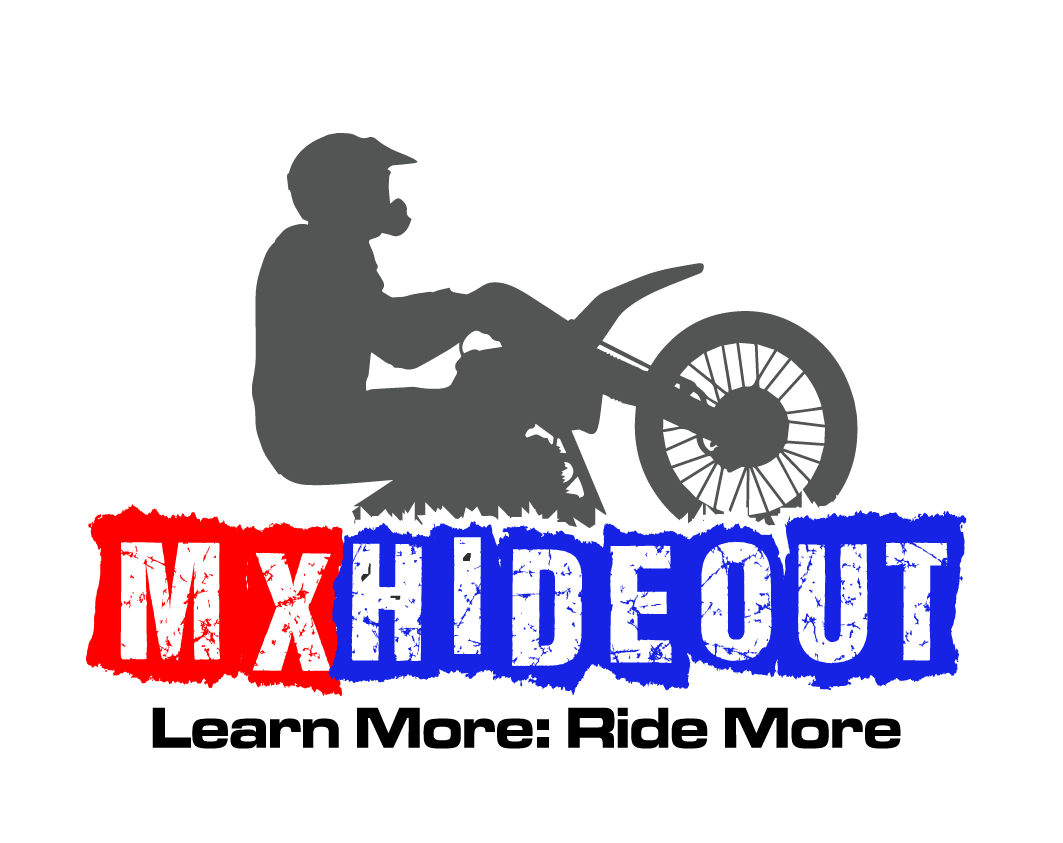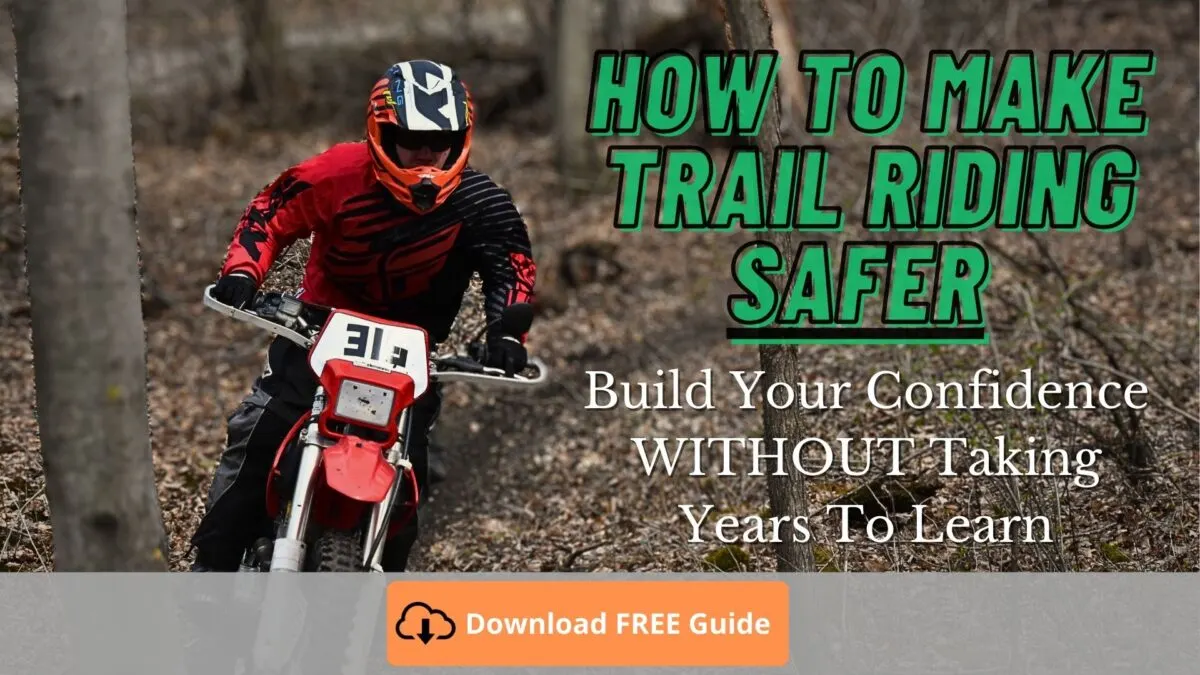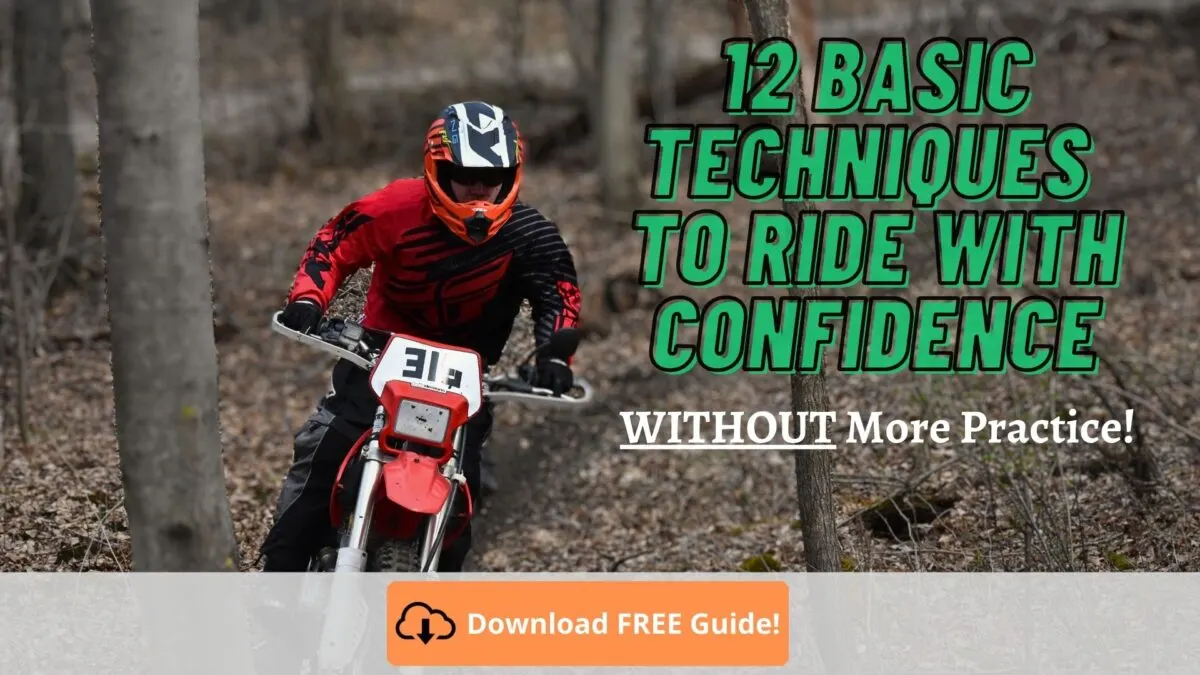Are you a new rider or simply struggling to learn how to use the clutch and you can’t stop stalling? I want to show you 3 simple steps to improve your dirt bike clutch control so that you don’t keep stalling or wheelie and crash.
Proper clutch control is one of the most important riding techniques you must learn to become a better dirt bike rider. It’s one of the first things you use when learning how to ride a dirt bike, but so many riders stop at “just good enough”…
Is it bad for a dirt bike to stall?
You might think it’s hard on the engine, transmission, or clutch if you stall, but in most cases, it won’t harm any of the internal parts. The engine simply shuts off and all of the parts stop moving.
However, if you’re riding at high speeds (such as 30+ mph) and the engine stalls (maybe you stab the rear brake or the engine runs out of gas), this can lock up the rear wheel and cause you to slide out and crash.
If your rear wheel locks up when it shouldn’t, it’s usually best to pull in the clutch and slow down to a stop as safely and fast as possible.
What causes a dirt bike to stall?
When the engine RPM drops too low to keep the piston firing in the cylinder, the engine will stall (stop spinning). If you go too slow for the gear that you’re riding in, the engine RPM will be too low and stall out.
For example, stalling might happen if you go under 4 MPH in first gear or under 10 MPH in 3rd gear if the clutch lever is out (clutch fully engaged).
Move Forward
This first step is not technically a “proper” technique for body position on a dirt bike, but it’s the way that I teach new riders so that you don’t “whiskey throttle” and wheelie or loopout right away.
It’s simply moving forward on the seat so that your body and arms are closer to the handlebars.
Why?
- More weight is in the front end, making it less likely to wheelie on you
- If you have poor throttle control, you’re less likely to whiskey throttle because you’re closer to the throttle
Position your elbows properly
If you’ve never ridden a dirt bike before, it’s easy to have incorrect body positioning. Your elbows don’t specifically do much themselves, but where you position them is very important.
Most new riders are in a relaxed and “stiff looking” position. The elbows are generally dropped down because that’s where it’s most comfortable at first!
For better control of the clutch, brake, and the entire bike, you must raise your elbows up.
How high, you ask? Your arms should be about parallel with your wrists, hands, and clutch/brake levers so that they’re aligned.
Having your elbows up high enough gives you more leverage and control when you need to take control of how the dirt bike is riding.
For example, riding a flat corner requires you to get forward on the seat with your butt on the outside of the seat. Keeping your elbows up gives you better leverage on the handlebars to easily lean or turn the bike quickly if the tires start sliding out.
Use the proper amount of fingers
How many fingers do you use on the clutch lever to pull it in? If it’s more than 2, you’re using too many.
You may say, “But Kelley, my clutch lever is too stiff to pull in with only 1 or 2 fingers!”
And I will answer: “Then your clutch is not properly adjusted or needs to be properly maintained”.
Using 4 fingers is a common mistake made by beginners. It’s easy to just use them all and not worry about the potential problems because you don’t know any better.
That’s why I’m here to help.
The 4-finger mistake
Using all 4 fingers to pull in the clutch means you don’t have any left on the handlebar. Your thumb is not going to be able to hang on if you have a hard impact. You’ll end up losing your grip and possibly end up wiping out.
Please don’t use 3 or 4 fingers on your clutch or brake lever.
Why 1-2 fingers is correct
It’s all about control. The less fingers you use to pull the clutch lever in, the better you can hang on to the handlebars. I like to use 1 finger when possible. But if your hand isn’t strong enough or your clutch is simply too stiff, 2 fingers works well too.

Learn where clutch engagement starts for your dirt bike
Clutch engagement is simply the point when your dirt bike starts moving when you’re letting the clutch lever out while in gear. It’s also known as “the friction zone” or “slipping the clutch” when the clutch isn’t fully engaged (lever all the way out).
Every dirt bike has a slightly different point of engagement. Your bike may start engaging (moving) as soon as you start letting the clutch out. Or it might not start engaging until the lever is almost all the way out.
Learning where your dirt bike specifically starts engaging and how wide that zone or range is will help you understand how your clutch works. This will build your muscle memory and help prevent stalling the engine.
Keep them on the lever
The last tip that is on my list of essential riding techniques is very simple but very important. It’s as simple as keeping that 1 or 2 fingers on the clutch lever at all times.
This means
That’s why I prefer to use 1 finger to pull in the clutch. Keeping 3 fingers on the bars instead of 2 gives you that little extra grip strength that might help prevent a hard crash!
Bottom Line
As a quick summary, here’s what you need to remember when using the clutch on your dirt bike to have proper control:
- Move forward
- Position your elbows properly
- Use the proper amount of fingers
- Learn where clutch engagement starts for your dirt bike
- Keep them on the lever
How do you turn a dirt bike without stalling?
Dirt bike stalls when slowing down
If your dirt bike stalls when slowing down or coming to a stop, these are the most common causes:
- You’re in too high of a gear
- You didn’t pull in the clutch lever when the engine RPM dropped too low
- Stabbing at the rear brake, locking up the rear wheel
- Engine idle speed set too low (stalls when idling with clutch pulled in)
Go more in-depth through my riding school online
Like these riding tips and want to go more in depth to become a better rider faster? Click here to learn more about my Virtual Dirt Biker School.



Max DuBois
Friday 21st of May 2021
Excellent tips! I don't have a problem with clutch control but it is definitely something I will pass on to New Riders to help make it easier for them to learn and to progress faster. Keep up the good work
Kelley Fager
Friday 21st of May 2021
Appreciate the feedback! And thanks for passing it on... I hate seeing new riders struggle and then eventually quit riding. Thanks for reading, Max!